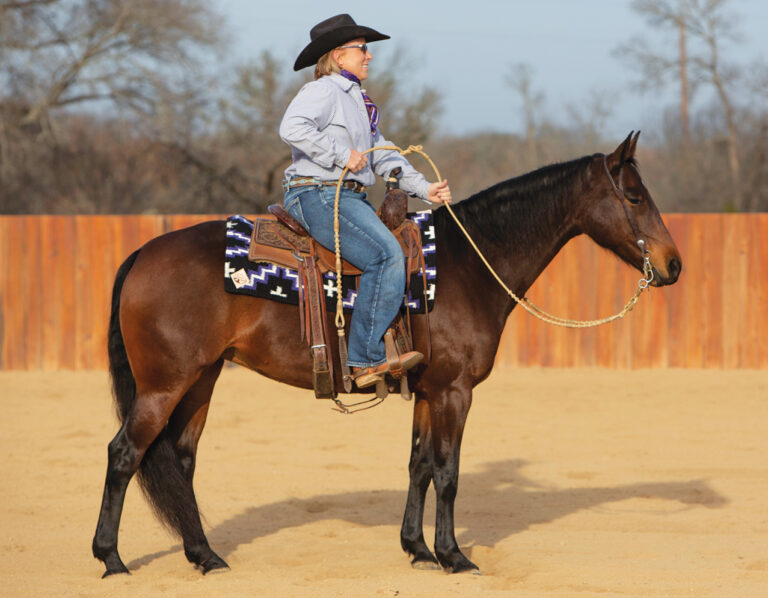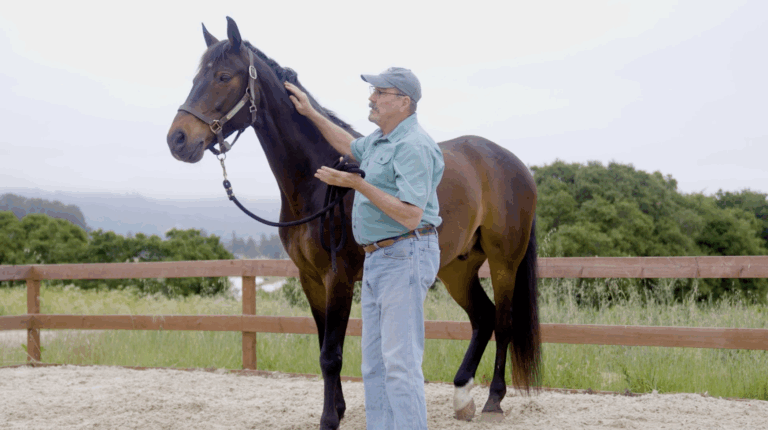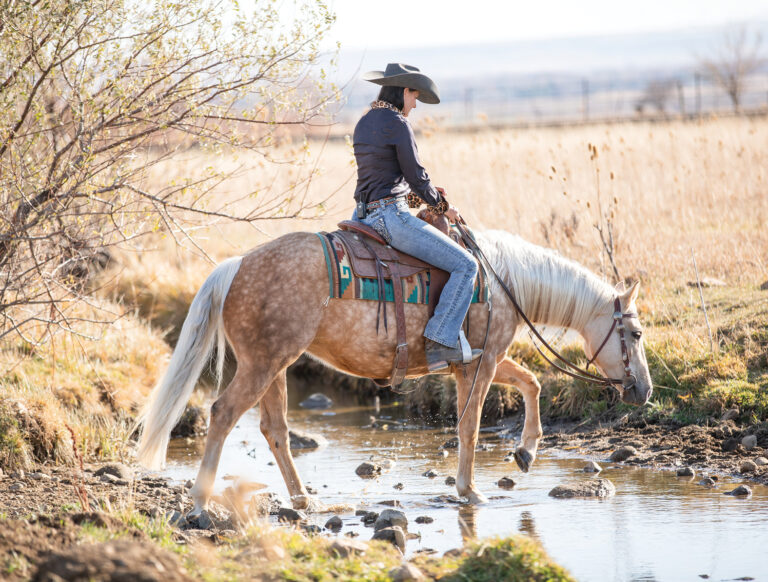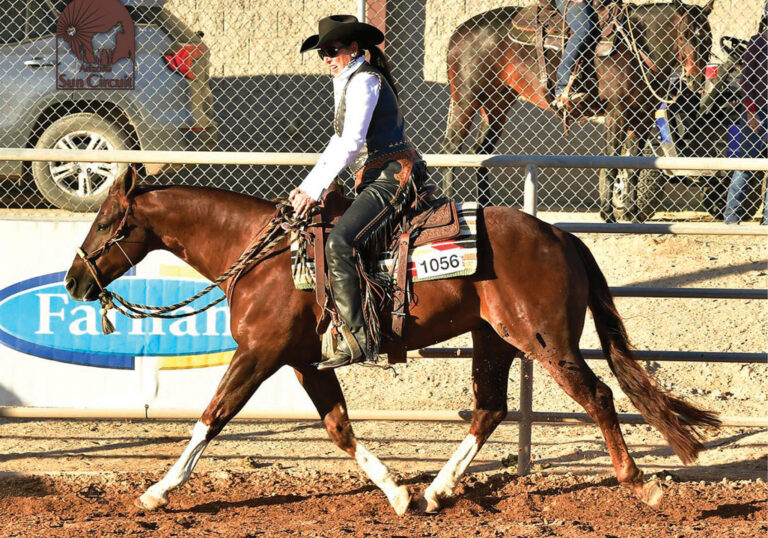2. Continue straight up the right side of the arena circle back around the top of the arena, and staying at least 20 feet from the walls or fence, run straight down the left side of the arena past the center marker and do a right rollback—no hesitation.
Some exhibitors love this pattern, and some hate it. Pattern 3 is one of the NRHA’s longest reining patterns, so it can make a show run longer, but as a pattern to keep a horse quiet or a nervous exhibitor calm, it’s a great one.
Because reining horses are judged from the time they enter the arena, the first maneuver is pretty drawn-out. You can use that to your advantage to get into the pen, take a deep breath, lope quietly around the end, and find your position for the run down to the rollback.
The maneuver description states, “Stay at least 20 feet from the wall or fence, run past center marker, perform rollback, no hesitation.” Penalty situations include not staying 20 feet from the wall (½ point), not passing the center marker before initiating a stop (2 points), and freezing up in the rollback (2 points).
As you’re rounding the end of the arena, look through your turn to find the ideal spot to start your rundown. If you start too close to the wall, you’ll need to veer back out, and that can make for a wobbly run. Pick your starting spot well out from the wall, stay straight, and build to your horse’s best pace. Bursting to top speed right out of the turn usually shows a lack of control, and it often results in a horse running away or wanting to quit before he passes the center marker.
Focus on a point at the far end of the arena during your rundown, and really use that far half of the pen. That’s a lot of space to show off a nice run and rollback, so don’t just shut your horse down as soon as he hits that center marker.
A rollback is defined as a “180-degree reversal of forward motion completed by running to a stop, rolling (turning) the shoulders back to the opposite direction over the hocks, and departing in a canter as one continuous motion.” The horse should snap back onto his original tracks with fluidity and without hesitation.
If an exhibitor avoids penalties, I then decide if the rollback was a credit-earning manuever. You’ll earn a plus 1½ points for an excellent maneuver, a plus 1 for a very good maneuver, and a plus ½ point for a good maneuver. I’ll give a 0 maneuver score for an average/correct maneuver showing no degree of difficulty. You can also lose credit for a maneuver, even when no penalty is incurred. For example, a minus ½ point for poor execution, a minus 1 point for a very poor maneuver, and a minus 1½ points for an extremely poor maneuver.
These scoring guidelines (with different penalty situations) are used for every maneuver when scoring reining, with a composite score of penalties and maneuver scores added to, or subtracted from, 70 at the end of every run.
For the second maneuver, you run back around the top of the arena and down the left wall or fence, past the center marker, and perform a right rollback. This is another chance to ride quietly around the end of the arena, and set up for a good position coming into the next stop and rollback.
When you finish this rollback, be aware of the center marker’s location. A right rollback sets your horse up easily on his right lead, and you’re ready to head for the center of the arena to begin the third maneuver—a right set of circles. We’ll pick up at this point next month.
Cynthia Rucker has a long history of training all-around AQHA, APHA, and NRHA horses, and coaching youths and amateur riders. She currently owns and operates Rucker Horse and Pet, a feed, pet supply, tack, and apparel business (ruckerhorseandpet.com) in Cumming, Georgia. She holds judges cards with the AQHA, APHA, ApHC, NRHA, NRCHA, NSBA, PtHA, PHBA, and IBHA, and has judged the AQYHA World Show, APHA Open World Show, NSBA Breeders Cup, PHBA and ApHC Open World Shows.




